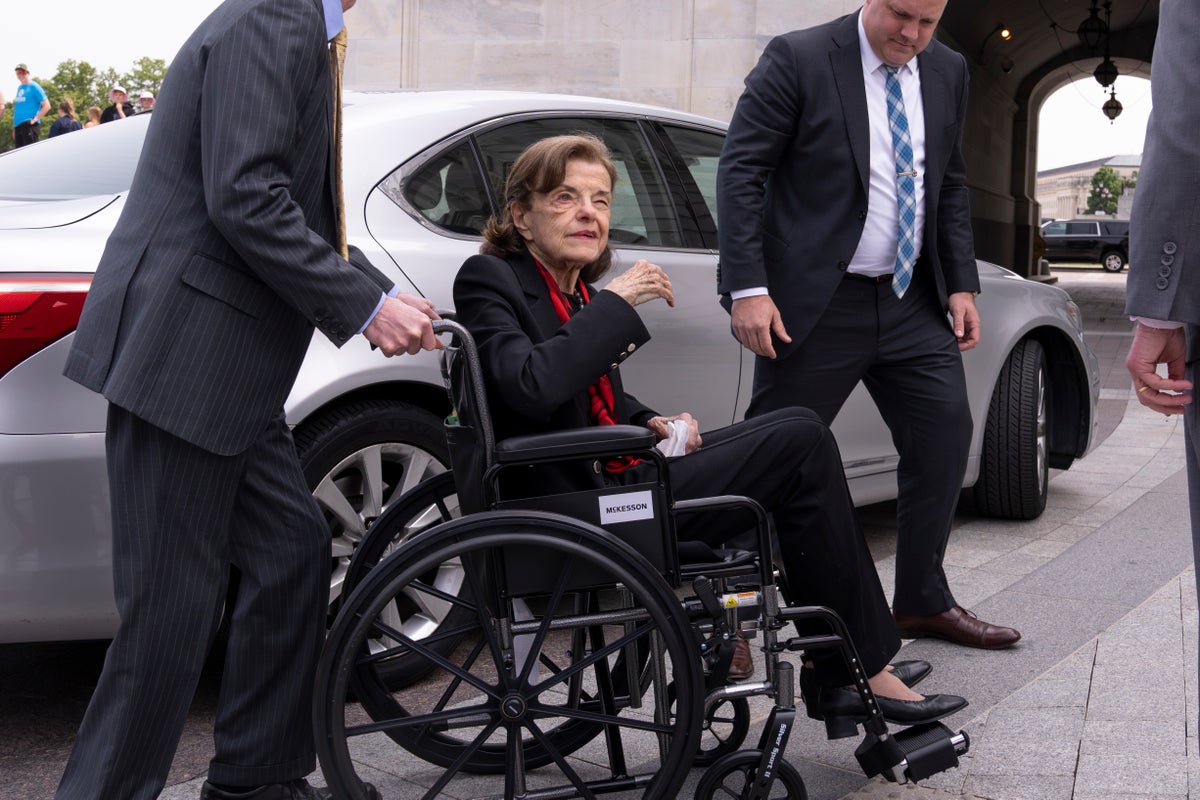
A New York Times report has amplified questions about the refusal of Democratic US Senator Dianne Feinstein, 89, to step down from office – claiming the Californian politician relies heavily on aides and at times seems uncertain of where she is or what is happening.
“They push her wheelchair, remind her how and when she should vote and step in to explain what is happening when she grows confused,” congressional correspondent Annie Karni wrote in a New York Times article published on Sunday. “They stay with her in the cloak room just off the Senate floor, where Ms. Feinstein has taken to waiting her turn to vote, then appearing in the doorway to register her ‘aye’ or ‘nay’ from the outer edge of the chamber.”
In an example of how Ms Feinstein has occasionally “expressed confusion about the basics of how the Senate functions,” the piece continued: “When Vice President Kamala Harris was presiding over the chamber last year in one of many instances in which she was called upon to cast a tiebreaking vote, Ms. Feinstein expressed confusion, according to a person who witnessed the scene, asking her colleagues, ‘What is she doing here?’ Staff members have been overheard explaining to her that she cannot leave yet because there are more votes to come.”
The trailblazing senator, who first took her seat in 1992 and established a reputation for having one of the most efficient offices in Congress, announced in February that she would not seek re-election in 2024 but would finish out the remainder of her term.
In that intervening time, she promised to do “as much for California as I can through the end of next year when my term ends”.
“Each of us was sent here to solve problems,” she said. “That’s what I have done for the last 30 years, and that’s what I plan to do for the next two years.”
That time, however, has been plagued by frail health and memory problems.
Earlier this month, the senator returned to work in a wheelchair following a two-month-long absence to recover from shingles which sparked encephalitis and Ramsay Hunt syndrome, which causes facial paralysis. Her refusal to step down has engendered significant and heated debate touching on everything from partisanship to ageism and sexism.

“Since returning to Washington, Ms. Feinstein has missed six votes and has not participated in any committee hearings or caucus lunches,” the New York Times reported. “Still, there is a sense among her staff members that the office needs to keep functioning. And the reality of the Senate is that, even with a senator sidelined, an office can run in a fairly normal fashion.”
Those who work with the senator defended her and emphasised her stubborness.
“All senators rely heavily on staff to do the job, particularly a senator who represents 40 million people,” the senator’s chief of staff, James Sauls, told the paper. “While staff advise her, she ultimately is the one who makes the decision about how to best take action for the people of California.”
The New York Times report, however, sparked a flurry of continued dialogue on social media on Sunday.
“If she steps down the GOP senators won’t allow the Dems to replace her on the judiciary committee,” wrote Twitter user @Carybees1. “So no other judges will be confirmed. Hope she stays on the committee until her term ends.”
Conversely, one southern California constituent tweeted about her reluctant belief the senator should resign.
“She has to retire today, and I say that as someone who voted for her every time,” @housesandme tweeted. “And who deeply admires her service all the way back to San Francisco and how she stepped up.”
A spokesman for Senator Feinstein told The Independent on Sunday that her office would not be making additional comment.







